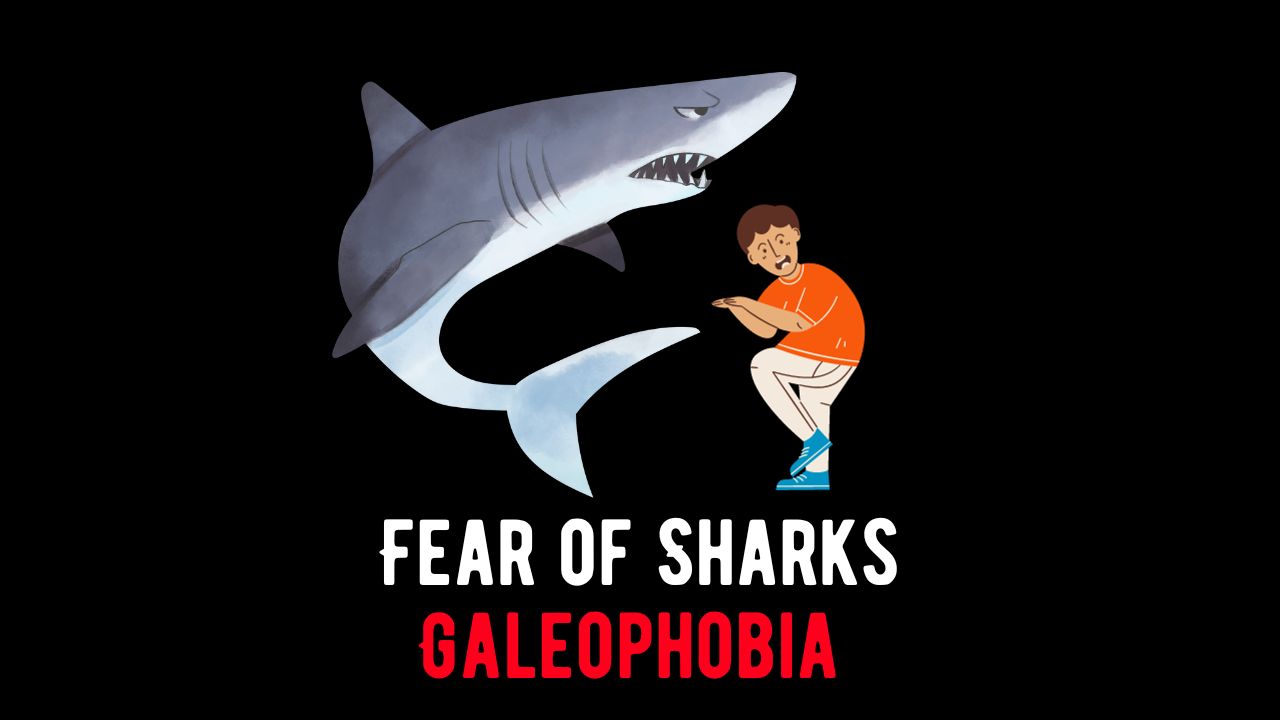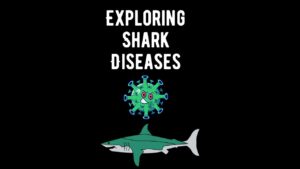
Galeophobia, an intense and irrational fear of sharks, goes beyond a simple aversion to these marine creatures. It is a specific phobia that can significantly impact an individual’s daily life and well-being. This comprehensive exploration aims to delve deeper into galeophobia, shedding light on its triggers, causes, symptoms, and the diagnostic criteria used to identify this fear.
Introduction to Galeophobia
Galeophobia, often rooted in various psychological and environmental factors, stands as a unique phobia with multifaceted implications. The fear of sharks, while widespread, varies in intensity and manifestation among individuals. This section introduces readers to the concept of galeophobia, laying the groundwork for a nuanced understanding.
Triggers of Galeophobia
Understanding the triggers that evoke fear in individuals with galeophobia is crucial for both those experiencing the fear and those providing support. This fear can be triggered by various stimuli, including visual representations, real-life encounters, or specific situations. This section explores common triggers, offering insights into the diverse sources of anxiety associated with sharks.
Causes of Galeophobia
Examining the underlying causes of galeophobia involves unraveling a combination of evolutionary, psychological, and experiential factors. The interplay of these elements contributes to the development and persistence of this fear.
A. Evolutionary Roots
Galeophobia may have evolutionary roots tied to survival instincts. This subsection investigates the evolutionary factors that might have led to the development of fear towards sharks. Exploring how our ancestors’ encounters with these apex predators influenced our innate fear responses provides valuable context.
B. Psychological Factors
Psychological elements, including cognitive processes and information processing, play a crucial role in the formation and perpetuation of galeophobia. This subsection delves into the psychological underpinnings of the fear of sharks, examining how perceptions, beliefs, and cognitive biases contribute to its development.
C. Experiential Factors
Personal experiences, especially traumatic incidents or negative encounters with sharks, can significantly contribute to the development of galeophobia. This subsection explores the role of individual experiences in shaping this fear, recognizing the impact of both direct and vicarious experiences on an individual’s perception of sharks.
Symptoms of Galeophobia
Recognizing the symptoms of galeophobia is essential for early intervention and effective treatment. This section outlines the various physical, emotional, and behavioral symptoms associated with this fear, providing a comprehensive overview of how galeophobia manifests.
A. Physical Symptoms
Physical symptoms often manifest in response to the perceived threat. Increased heart rate, sweating, trembling, and other physiological reactions are common responses to the fear of sharks. This subsection explores the range of physical symptoms associated with galeophobia.
B. Emotional Symptoms
Emotional responses to galeophobia can include intense anxiety, panic attacks, and an overwhelming sense of fear. This subsection delves into the emotional manifestations of galeophobia, exploring the depth of emotional distress that individuals may experience.
C. Behavioral Symptoms
Behavioral symptoms encompass avoidance behaviors, obsessive thoughts, and other actions taken to minimize exposure to sharks. This subsection examines the behavioral aspects of galeophobia, shedding light on how individuals modify their behavior to cope with their fear.
Diagnosis of Galeophobia
Diagnosing galeophobia involves assessing the intensity and impact of the fear on an individual’s life. This section explores the diagnostic criteria used by mental health professionals to identify and classify galeophobia, providing a structured framework for understanding this specific phobia.
A. DSM-5 Criteria
The Diagnostic and Statistical Manual of Mental Disorders (DSM-5) is a key resource for mental health professionals. This subsection outlines the DSM-5 criteria for diagnosing specific phobias, including galeophobia. By examining these criteria, readers gain insights into the standardized measures used to evaluate the severity of galeophobia.
B. Assessment Tools
Various assessment tools and questionnaires aid in the diagnosis and evaluation of galeophobia. This subsection explores the use of these tools in clinical practice, emphasizing their role in providing a comprehensive picture of an individual’s fear and associated symptoms.
Coping Strategies and Treatment Options
Managing galeophobia involves a range of coping strategies and treatment options. This section provides insights into self-help techniques, therapeutic approaches, and potential interventions aimed at alleviating the impact of galeophobia.
A. Self-Help Strategies
Individuals with galeophobia can employ self-help strategies to alleviate symptoms and gradually overcome their fear. This subsection offers practical tips for managing galeophobia independently, empowering individuals to take proactive steps in their recovery.
B. Therapeutic Approaches
Therapeutic interventions, including exposure therapy and cognitive-behavioral therapy, have proven effective in treating specific phobias, including galeophobia. This subsection explores how these approaches can be tailored to address galeophobia, providing an in-depth understanding of evidence-based therapeutic interventions.
C. Medication Options
In some cases, medications may be prescribed to manage symptoms associated with galeophobia. This subsection discusses the potential role of medication in the treatment of this fear, exploring the use of anti-anxiety medications and other pharmacological interventions.
Real-Life Narratives and Success Stories
Personal stories of individuals who have successfully navigated and overcome galeophobia provide inspiration and hope. This section shares narratives that highlight the journey from fear to empowerment, showcasing the resilience and determination of individuals in their pursuit of overcoming galeophobia.
Conclusion
In conclusion, galeophobia is a complex and challenging fear that can impact individuals on various levels. By understanding its triggers, causes, symptoms, and the diagnostic process, individuals, as well as mental health professionals, can work towards effective coping strategies and treatments.
Whether through self-help methods, therapeutic interventions, or a combination of approaches, it is possible to overcome galeophobia and foster a more positive relationship with the ocean and its inhabitants. This comprehensive exploration serves as a guide for those seeking to understand, address, and overcome the fear of sharks, ultimately promoting mental well-being and a more harmonious connection with the marine world.
FAQs About Galeophobia: Overcoming the Fear of Sharks
Q1: What is Galeophobia?
A: Galeophobia is an intense and irrational fear of sharks. It goes beyond a simple aversion and can significantly impact an individual’s daily life and well-being.
Q2: What are the Common Triggers of Galeophobia?
A: Common triggers include visual stimuli like images or videos of sharks, real-life encounters, and specific situations such as swimming in open water.
Q3: Are Evolutionary Factors Linked to Galeophobia?
A: Yes, galeophobia may have evolutionary roots tied to survival instincts, where our ancestors’ encounters with sharks influenced innate fear responses.
Q4: How Do Psychological Factors Contribute to Galeophobia?
A: Psychological elements such as cognitive processes and information processing play a crucial role in forming and perpetuating galeophobia. Beliefs and cognitive biases contribute to its development.
Q5: Can Personal Experiences Cause Galeophobia?
A: Yes, negative encounters or traumatic incidents with sharks can significantly contribute to the development of galeophobia. Individual experiences play a crucial role in shaping this fear.
Q6: What Are the Physical Symptoms of Galeophobia?
A: Physical symptoms include increased heart rate, sweating, trembling, and other physiological reactions in response to the perceived threat of sharks.
Q7: How Can Galeophobia Impact Behavior?
A: Behavioral symptoms may include avoidance behaviors, obsessive thoughts, and actions taken to minimize exposure to sharks. Individuals modify their behavior to cope with the fear.
Q8: How is Galeophobia Diagnosed?
A: Mental health professionals use the DSM-5 criteria, a diagnostic manual, to identify and classify galeophobia. Assessment tools and questionnaires aid in the evaluation of its severity.
Q9: What Self-Help Strategies Can Individuals Use?
A: Individuals can employ self-help strategies like gradual exposure, mindfulness, and education about sharks to manage galeophobia independently.
Q10: Are There Effective Therapeutic Approaches?
A: Yes, therapeutic approaches like exposure therapy and cognitive-behavioral therapy have proven effective in treating galeophobia. These can be tailored to address the fear of sharks.
Q11: Is Medication an Option for Galeophobia?
A: In some cases, medications like anti-anxiety medications may be prescribed to manage symptoms associated with galeophobia.






